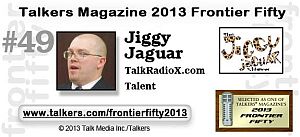John Chapter 5
We must understand that between Chapters 4 and 5 of John, Jesus ministered throughout Galilee, especially in Capernaum. He had been calling certain men to follow him, but it wasn’t until after this trip to Jerusalem that he chose his 12 disciples.
We must also remember that the Gospel of John is not a Synoptic Gospel (Only Matthew, Mark, and Luke). The reason they are called Synoptic is because all three express their views in basically the same way. Matthew is one of the three synoptic gospels and is the first book of the New Testament. This synoptic gospel is an account of the life, ministry, death, and resurrection of Jesus of Nazareth. It details his story from his genealogy to his Great Commission. Matthew is the gospel most closely aligned with first-century Judaism, as it repeatedly stresses how Jesus fulfilled Jewish prophecies. Matthew only relates certain details of Jesus’ life, of his infancy in particular. Matthew is also the only Gospel to mention the Church or ecclesia. 0f 666 verses in Mark, 661 is also listed in the Book of Matthew. The gospel of Mark narrates the life of Jesus of Nazareth from his baptism by John the Baptist to the resurrection (or to the empty tomb in the earliest manuscripts), but it concentrates particularly on the last week of his life (chapters 11-16, the trip to Jerusalem). Its swift narrative portrays Jesus as a heroic man of action, an exorcist, a healer and miracle worker. It calls him the Son of Man, the Son of God, and the Christ (the Greek translation of Messiah). Luke’s writing from a Gentile perspective, is characteristically concerned with social ethics, the poor, women, and other oppressed groups. Certain popular stories on these themes, such as the prodigal son and the Good Samaritan, are found only in this gospel. John’s gospel has a special emphasis on prayer, the activity of the Holy Spirit, and joyfulness. This doesn’t cover much of Jesus’ 3 ½ years of ministry. John’s gospel is an account of the life and ministry of Jesus of Nazareth. It details the story of Jesus from his Baptism to his Resurrection. The Synoptic Gospels cover most of the events of Jesus’ three and a half years ministry, however that was not God’s intent in inspiring John to write this Gospel. John only covers about twenty-two days in the life of Christ.
Chapter Five begins stating that there was a feast of the Jews and that Jesus went up to Jerusalem. The Synoptic Gospels do not tell us much about Jesus’ trips to Judaea, but John specifically mentions three trips there to observe the Passover. There were three feasts that required all Jewish males to come to Jerusalem. First, the Feast of Passover and Unleavened Bread (is a Jewish and Samaritan holy day and festival commemorating the Hebrews’ escape from enslavement in Egypt). Secondly, the Feast of Weeks (also called Pentecost) (is a Jewish holiday that occurs on the sixth day of the Hebrew month of Sivan (late May or early June). Shavuot commemorates the anniversary of the day God gave the Torah to Moses and the Israelites at Mount Sinai.). Thirdly, Feast of Tabernacles (a week long holiday that occurred on the 15th of the month between late September to late October.) is a seven-day Jewish festival also known as Sukkot or the Feast of Booths . It is immediately followed by the eighth day which alludes to the redemption at the end of days and where shelter is no longer required as protection against physical elements.The feast of Tabernacles is one of the most important days in the Judaic tradition and is celebrated on the 15th of Tishrei in the Hebrew calendar.
In Jerusalem there was a gate into the city called the Sheep Gate, which was where the sheep that were to be sacrificed in the temple were brought into the city. The building of this gate is mentioned in Nehemiah 3:1, 32; 12:39 and is believed to have been located near the northeast corner of the city.
John says that at the Sheep Gate there was a pool of water called “Bethesda.” The word “Bethesda” translated from Hebrew means a “house of kindness, grace or mercy”. This was a pool that had Roman arch supported porches. It was believed to be outside the Jerusalem wall below the Tower of Antonia that as discovered in 1888. Archaeologists unearthed a rectangular pool with a portico on each side and a fifth one dividing the pool into 2 separate compartments, which fits the Bible’s description.
“In these lay a great multitude of impotent folk, of blind, halt, withered, waiting for the moving of the water. For an angel went down at a certain season into the pool, and troubled the water: whosoever then first after the troubling of the water stepped in was made whole of whatsoever disease he had” (John 5:3-4).
Gathered around the pool were many people with various ailments such as the blind, crippled or lame, and those who had palsy which withered up some part of their body. This pool was supplied by water from underground springs. We are not told what it was used for other than the tradition that at times an angel would “trouble” or stir up the waters. The belief was that an angel would come and stir up the waters and the first person that entered the pool when waters were stirred up would be healed of their infirmaries. Nothing like this is recorded in the Bible and it is believed to have been more of a tradition than fact. The source of the myth could have come from the waters of the pool having a mineral content with medicinal properties. The waters of the spring would be occasionally agitated by the release of these minerals and healing effected. John simply states the belief of those gathered at the pool without any explanation, so we just do not know. What is important is that those there believed they could be healed if they were the first into the pool. The lame men like others were hoping to be healed.
“And a certain man was there, which had an infirmity thirty-eight years. When Jesus saw him lie, and knew that he had been now a long time in that case, he saith unto him, Wilt thou be made whole?” (John 5:5-6).
Those who have chronic diseases, which are normally incurable, will go to great lengths to find relief and healing. When Jesus approached the pool he saw a man there who had been crippled for thirty-eight years. Jesus being omniscient knew the man had been there a long time and asked him did he want to be healed.
Jesus asks the lame man did he want to be whole? That question is a vital one for all who have physically infirmities, but more importantly for those who being lost in their sins have the need of being made spiritually whole. Jesus Christ came into the world to save sinners and whosoever will believe in Him will be saved. But throughout the ages few have been saved. The reason is because most do not want to be spiritually cleansed.
“The impotent man answered him, Sir, I have no man, when the water is troubled, to put me into the pool: but while I am coming, another steppeth down before me” (John 5:7).
Healing only comes for those who want it. Clearly this man wanted to be healed and that was the reason he was waiting by the pool. Evidently the man could get around to some degree, but was not fast enough to be the first into the pool. This had happened several times before, but it showed the man had real character in his persistence. He kept trying and did not give up. As difficult as the task was in getting up and getting into the pool, he was not deterred. The man could have said, “It is no use. I will go home and die.” God had a plan for this man.
Some might suppose that God imposed His will on the lame man and made him persistent, but a better explanation is that God knew the man’s character and this made his healing possible. This does not mean the man deserved to be healed, but the man exercised a great deal of faith in the healing properties of this pool. Jesus knew the man’s heart was one of humility and fertile ground for receiving saving faith. There were many others by the pool desiring to be healed, but Jesus chose this man.
“Jesus saith unto him, Rise, take up thy bed, and walk. And immediately the man was made whole, and took up his bed, and walked: and on the same day was the Sabbath” (John 5:8-9).
Instantly, as Jesus spoke the words, the man was completely healed. To show he was fully healed, the man picked up his bed and began to walk. He did not need to go to “rehab” to learn to walk again. He was healed mind and body and such is a true miracle healing by God.
“The Jews therefore said unto him that was cured, It is the Sabbath day: it is not lawful for thee to carry thy bed. He answered them, He that made me whole, the same said unto me, Take up thy bed, and walk. Then asked they him, What man is that which said unto thee, Take up thy bed, and walk? And he that was healed wist not who it was: for Jesus had conveyed himself away, a multitude being in that place” (John 5:10-13).
This incident gives us some real insight into the wicked hearts of the Jews. The Jews witnessed the healing of the lame man, but instead of rejoicing with him, they rebuked him for carrying his bed on the Sabbath. Clearly, this healing was done by Jesus, was not only heal the man, but to show the hardness of the hearts of these religious Jews. If a true believer saw a great miracle of God, certainly they would be rejoicing with the man and praising God for the healing. Yet, the first thing in the minds of these blind Jews was it was the Sabbath and work was forbidden.
Exodus 16:23-29 records God the first mentions the keeping of the Sabbath to the Jews. After Moses lead Israel out of Egypt, God told them to gather enough manna on the sixth day of the week to cover the seventh day, which was the Sabbath. God instructed them to keep the Sabbath day holy, which means it was a day of worship and not for working to provide themselves substance. God was teaching them to rely upon Him and the importance of the day of rest and worship. On the sixth day God provided manna for the Sabbath. Although the Sabbath was a special day given by God to Israel, the principle of believers today of observing a day of rest and worship is still valid. Because Christ arose on the first day of the week, early Christians and those of today worship on Sunday. Exodus 31:12-18 says the Sabbath was a special sign between God and Israel. Sabbath keeping was a part of the Mosaic Law and was not given to Christians in this dispensation of the Church Age.
Matthew 12:1-13 records that Jesus and his disciples were hungering on the Sabbath day and they pluck ears of corn. When the Pharisees saw it they accused Jesus, the author of the Sabbath day, of being unlawful in gathering barley on the Sabbath. Jesus immediately rebuked them by reminding them that David and his men, when hungry ate the shew bread in the Tabernacle. That too was unlawful, but because of the circumstances was not wrong. He also reminded them that their priests profaned the Sabbath day by carrying on their temple duties, and under the law they were blameless
Jesus later strongly rebuked the Pharisees telling them, “Ye blind guides, which strain at a gnat, and swallow a camel” (Matthew 23:24). Paul explained, “Who also hath made us able ministers of the New Testament; not of the letter, but of the spirit: for the letter killeth, but the spirit giveth life” (2 Corinthians 3:6). The Jews prided themselves in their self-righteousness. The outward keeping of the law was their badge of their religious zeal. They had no concept of the spiritual nature of God and of true believers. Therefore when they saw someone supposedly breaking the law they would piously and vehemently attack them as being “law breakers.” They thought in their minds that this showed them selves to be better than others. Paul wrote, “For I bear them record that they have a zeal of God, but not according to knowledge.” (Romans 10:2) Jesus said, “God is a Spirit: and they that worship him must worship him in spirit and in truth” (John 4:24).
The lame man responded that the man who healed him told him to take up his bed and walk. Verse 13, explains that the man did not know who Jesus was and that Jesus as soon as He had healed the man slipped away because of the multitude in the place. Jesus apparently moved away from the man, who did not have time to even ask who it was that had healed him. Probably seeking avoid a confrontation with the Jews and a possible riot, Jesus left the area.
“Afterward Jesus findeth him in the temple, and said unto him, Behold, thou art made whole: sin no more, lest a worse thing come unto thee. The man departed, and told the Jews that it was Jesus, which had made him whole” (John 5:14-15)
. After healing the man Jesus went to the temple and found the man. The man did not know who Jesus was, but he knew it as God that had healed him. So, he immediately went to the temple to give thanks to God for making him whole. It shows the man believed in God and wanted to give Him thanks for the blessing he had received. As mentioned earlier this is probably why Jesus chose him to be healed over the many others there.
Jesus finding the man tells him that he is made whole and to go and sin no more. Jesus’ statement to the man was made to address his spiritual condition. Jesus said he had been made physically whole. Now go and sin no more, That referred to being spiritually made whole as well. Many believed that his being lame was the result of past sins and Jesus was showing him He knew the past and the future. Jesus was giving a stern warning. Being lame was a terrible thing, but being spiritually dead was much worse. Sin separates us from God and eternal life. Thirty-eight years of being lame was bad, but a lot worse was being unrepentant and losing one’s soul. There was no comparison between being lame all those years and spending eternity in hell.
The man then went and told the Jews that it was Jesus who had healed him. It is doubtful that the man had any ill intent in returned to the Jewish leaders and telling them who had healed him. Rather it was probably because he wanted to give Jesus the credit for this miracle that had been preformed on him. The Jews had attacked the man for carrying his bed on the Sabbath, so the man went to them to explain who it was who had healed him and told him to take up his bed.
“And therefore did the Jews persecute Jesus, and sought to slay him, because he had done these things on the Sabbath day. But Jesus answered them, My Father worketh hitherto, and I work. Therefore the Jews sought the more to kill him, because he not only had broken the Sabbath, but said also that God was his Father, making himself equal with God” (John 5:16-18).
When they heard it was Jesus who had healed the man and told him to take up his bed they were infuriated. Jesus had taken upon himself the authority to tell someone to violate the Sabbath. They had seen His miracle and heard his preaching, which authenticated that He was the Messiah, but they refused to accept the truth. Nicodemus, a Pharisee himself, revealed what everyone knew, that “. . .no man can do these miracles that thou doest, except God be with him.” (John 3:1) These religious leaders knew it as well. But their response was not to recognize this obvious truth, or even to inquire of it, but to off handedly reject it and seek to silence Jesus by killing Him.
This time Jesus did not avoid the conflict with them. His response was that God the Father had His work to do and on an equal par with God He too had His work. This is an absolute declaration of Jesus’ deity. Some have falsely suggested that Jesus never claimed to be God. Jesus’ response refutes that misguide idea. The evidence is clear in this passage. The Jews certainly understood His statement and sought even more to kill Him because in their own words, “. . .he not only had broken the Sabbath, but said also that God was his father, making himself equal with God.” (John 5:18)
“Then answered Jesus and said unto them, Verily, verily, I say unto you, The Son can do nothing of himself, but what he seeth the Father do: for what things soever he doeth, these also doeth the Son likewise. For the Father loveth the Son, and sheweth him all things that himself doeth: and he will shew him greater works than these, that ye may marvel. For as the Father raiseth up the dead, and quickeneth them; even so the Son quickeneth whom he will” (John 5:19-21).
Verses 19-47 record Jesus’ long reply to the Jewish leaders who were seeking to kill Him. Jesus gave them a stunning declaration of His deity and ministry. He began with the reply with the words, “Verily, verity” which means “amen and amen” or “so be it, so be it.” The sinful pride and self-righteous religious zeal blinded the Jews. Jesus explains to them plainly what they refused to see and exposes their blindness to the truth. He had stated in verse 17 His ministry and purpose was equal with God the Father. He now explains this truth further.
Jesus declares that the Son can do nothing independent or separate from God the Father. Bare in mind that Jesus stated He was equal with the Father. His point is that He cannot do anything contrary to God, because He is God. He cannot do anything that would oppose Himself. Jesus in His humanity before His crucifixion dreaded the terrible suffering He was about to under go, but He stated, ” nevertheless not my will, but thine, be done.” Being God Jesus could not go contrary to His nature of being absolutely righteous in all things.
Jesus and God the Father are One and could not do anything against Himself and that is the meaning of the “Father loveth the Son.” The Jews were denying what Jesus was doing was from God. They knew that only God could heal as Christ did, but in their slavery to their self -righteous works religion they refused to accept that Jesus was doing the Father’s will.
“Verily, verily, I say unto you, He that heareth my word, and believeth on him that sent me, hath everlasting life, and shall not come into condemnation; but is passed from death unto life. Verily, verily, I say unto you, The hour is coming, and now is, when the dead shall hear the voice of the Son of God: and they that hear shall live” (John 5:24-25).
In this Chapter, John refers back to the Old Testament where three signs of the coming Messiah are given. John shows that Jesus has fulfilled all three signs. All power and authority are given unto him as the Son Of Man (Daniel 7:13-14) the lame and sick are healed (Isaiah 35-6), the dead are raised to life (Deut: 32-39; 1 Samuel 2:6, 2 Kings 5-7).
Jesus plainly tells them that the only way to receive eternal life and avoid condemnation was to believe in Him. He states those that believe in Him shall pass from death unto life. The Jews, even in the blindness of their false religion, recognized that only God can forgive sins. Thus Jesus again is declaring that He is God, because those that believe in Him will have their sins forgiven. That was only an act that God could do.
The miracles that Jesus performed were done in accordance with God the Father’s will and in His power. Jesus is God come in the flesh, and as the doctrine of the Trinity reveals He and the Father are One. They are One yet Jesus was separate and independent of the Father. His responsibility or task, as the Son in the Godhead, in His Oneness with the Father, was to accomplish the will of God the Father, because God the Father, Son and Holy Spirit are One. Jesus’ purpose was to fulfill God’s plans. With Jesus the Son, and God the Father, there was complete unity. Jesus’ point in this passage was to emphasize that as God come in the flesh all He did was in accord with the Father. The Jews claimed that they knew God the Father and worshipped Him, yet they were blinded by their sin and religious pride. They did not really know God the Father.
.











